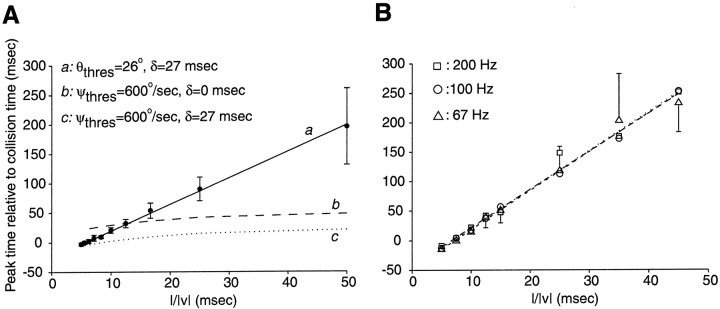Fig. 8.
No indication of angular velocity threshold artifacts was seen both at high and at low image refresh rates with the video stimulation system used in the present experiments. A, The experimental dependence of peak firing time as a function of l/‖v‖ (filled dots, mean ± SD) is well fitted by the linear relationship corresponding to an angular threshold θthres = 26° and a delay δ = 27 msec between the time of threshold angle and peak time (solid line a; see Eq. 5). In contrast, the prediction that the peak time should occur immediately after an angular jump of 3° in the image (dashed line b) only poorly fits the data. The same is true when a fixed delay is inserted between the time of 3° image jump and the peak, thus shifting the curve downward (dotted line c; same delay δ = 27 msec as for the angular threshold line θthres = 26°). See Appendix for the derivation of the angular threshold curve (Eq. EA7). B, Dependence of peak time as a function of l/‖v‖ for three different refresh rates of the video monitor (squares, 200 Hz; circles, 100 Hz; triangles, 67 Hz). The best linear fits to Equation5 (dotted line, short dashed line, long dashed line, respectively) virtually overlap in all three cases. For the sake of clarity only the largest SD of the mean peak time estimate in one direction is shown at each value of l/‖v‖ . Data in A and B are from two different experiments.

